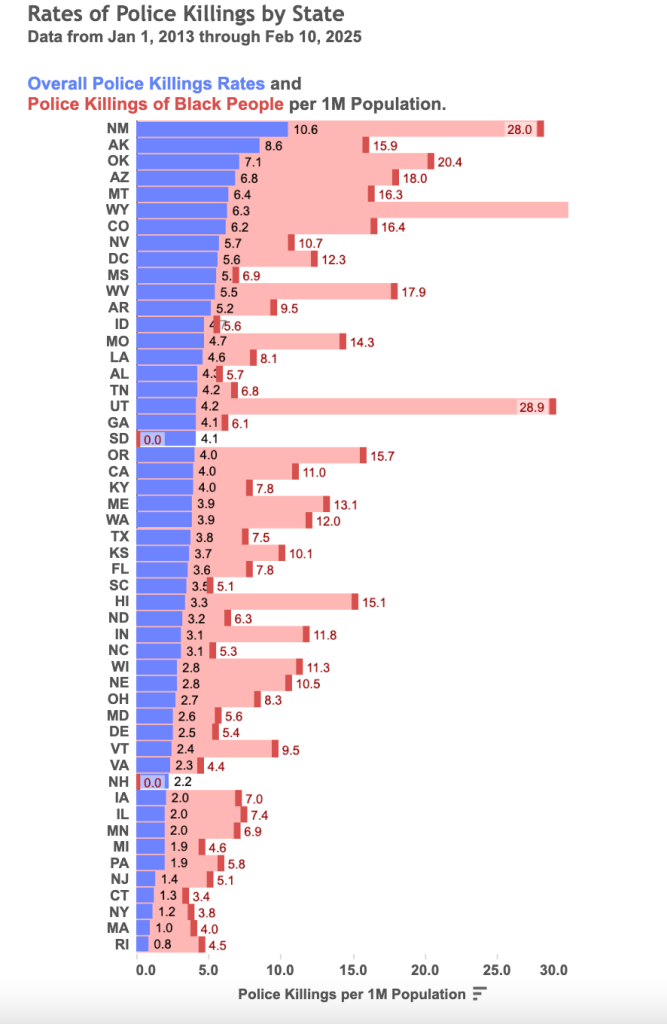Nearly five years after first proposing a federal database for police misconduct following the police killing of George Floyd, President Donald Trump’s second administration has shut it down.
The National Law Enforcement Accountability Database (NLEAD) no longer remains active, the Washington Post first reported. First approved by former President Joe Biden in 2023, the landmark accountability measure was the only federal database tracking records of individual police officers’ misconduct.
Biden approved the measure after Congress failed to pass the George Floyd Justice in Policing Act, which would’ve made it easier to convict police officers for their misconduct.

Meanwhile, the Department of Justice confirmed the shut down of NLEAD in a message on their website. It referenced Trump’s Jan. 20 executive order cancelling Biden’s order.
“User agencies can no longer query or add data to the NLEAD. The U.S. Department of Justice is decommissioning the NLEAD in accordance with federal standards.”
The decision comes as 2024 recorded the highest rate of police killings of civilians, according to MappingPoliceViolence.us.
Police killed at least 1,260 people last year, the highest total in over a decade.
White House statement
According to a statement from the White House to the Washington Post, the decision to axe the police misconduct database was at least partly motivated by Trump’s anti-DEI agenda.
“President Trump believes in an appropriate balance of accountability without compromising law enforcement’s ability to do its job of fighting crime and keeping communities safe,” read the statement. “But the Biden executive order creating this database was full of woke, anti-police concepts that make communities less safe like a call for ‘equitable’ policing and addressing ‘systemic racism in our criminal justice system.’
Mapping Police Violence database remains active
Meanwhile, 28 percent of people killed by police in 2024 were Black, even though Black Americans make up only about 13 percent of the U.S. population.
Samuel Sinyangwe is a researcher and founder of Mapping Police Violence. He was working as a policy researcher in Oakland when Mike Brown was killed by Ferguson Police officer Darren Wilson in Missouri in 2014. The murder catapulted Sinyangwe into establishing a national public database for police violence.
“It became clear early on that the federal government wasn’t doing a half way decent job of systematically collecting data on police violence,” Sinyange told the Black Wall Street Times. “They could tell you how much rain fall there was going back a hundred years in rural Wisconsin. They couldn’t tell you how many people were killed by police this year, last year, or the year before that.”

Oklahoma top 10 for police killings
In Oklahoma, the only state where all of its counties voted for Trump in each of the last three presidential elections, police violence remains at one of the highest rates in the nation.
Oklahoma had the third overall highest rate of police killings and the fourth highest rate of police killings of Black people in 2024, according to the Mapping Police Violence police misconduct database.

It also finds 98.2% of police killings between 2013 and 2024 went with no charges or accountability.
In a most recent example, Oklahoma Attorney General Gentner Drummond dropped charges against an Oklahoma City Police officer who faced an assault charge for brutally slamming a 71-year-old man to the ground over a traffic violation.
Lich Vu, an elderly Vietnamese man, got into a verbal altercation with the officer after a language barrier resulted in miscommunication. He’s since spent months in the hospital suffering a brain bleed.

Police database expands as federal database closes
The Trump Administration’s decision to cut the federal police misconduct database comes as police violence continues to increase each year. Meanwhile, a decade after launching Mapping Police Violence, Sinyangwe said his public database will continue to be available as his team works to expand the research’s scope.
“What we recognize is that deadly police violence is the tip of the iceberg and that for every case when somebody is killed by police, there are as many as 300 other instances where the police used violence against somebody and that person survived,” Sinyangwe said. “So, the full picture of police violence is much broader and impacts way more people than even the existing data is suggesting.”
Related Stories:
- Oklahoma Vietnamese community seeks action on police violence
- OKC Police officer bonds out of jail one day after rape arrest
- Oklahoma Top 10 For Rate of Police Killings in 2023


